Modern technology, such as digital effects and multimedia, can enhance Shakespearean productions by adding visual and auditory layers to the storytelling. For example, sound effects can be used to create atmosphere, while projections can highlight key themes or transitions. However, technology should complement the actors’ performances and not overshadow the power of the language.
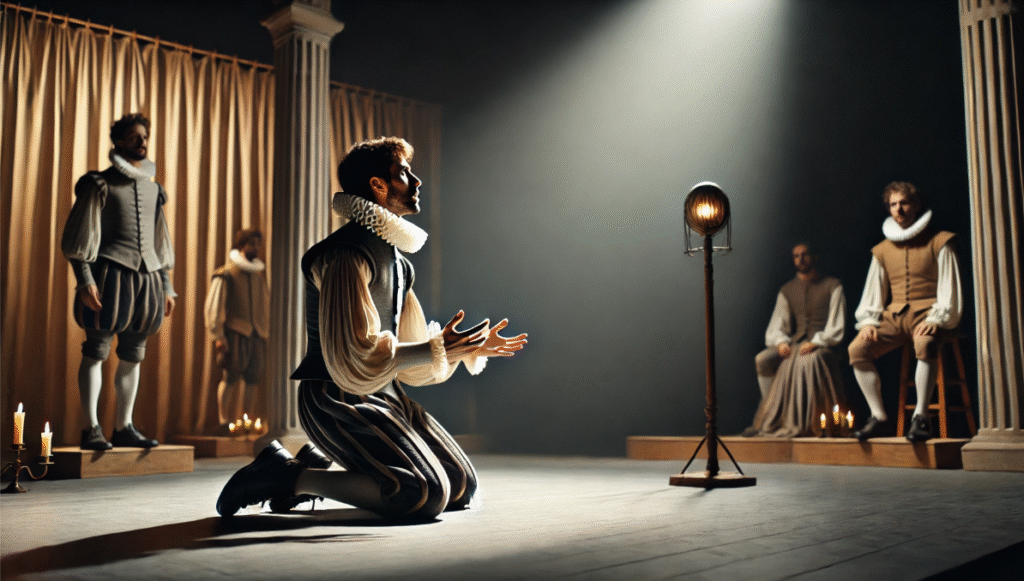
Mastering Shakespearean Theatre Conventions: A Comprehensive Guide for Actors and Directors
Imagine stepping onto the stage to perform one of Shakespeare’s iconic plays. The audience is waiting, the lights dim, and you’re ready to deliver a powerful performance. But there’s one catch: how do you master the intricacies of Shakespearean theatre conventions to bring the Bard’s words to life? 🎭
Whether you’re an actor looking to elevate your delivery or a director guiding your cast through the complexities of Shakespeare’s world, understanding these conventions is essential. From the rhythm of iambic pentameter to the art of breaking the fourth wall, mastering these conventions is the key to creating an authentic and engaging performance. But with so many rules and techniques to consider, it can be overwhelming for beginners.
Table of Contents
Toggle1: What are Shakespearean Theatre Conventions?
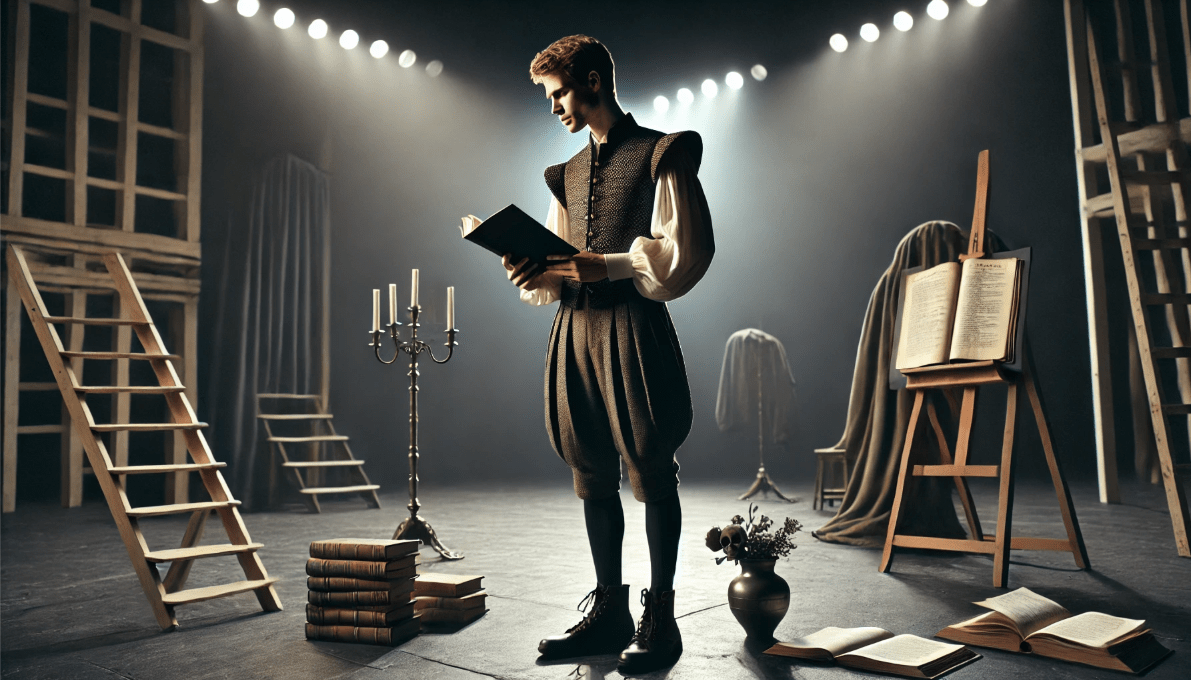
Shakespearean theatre conventions are the unique techniques, traditions, and styles that were used in the plays of William Shakespeare. These conventions helped define the experience of Shakespearean theatre, and understanding them is crucial for both actors and directors to create authentic, engaging performances.
But what exactly are these conventions, and why should you care about them?
In simple terms, Shakespearean theatre conventions are the set of practices that shaped the way Shakespeare’s plays were performed during his time—and continue to shape performances today. These include everything from the way characters speak (through verse or prose) to how they interact with the audience. 🎭
Key Features of Shakespearean Theatre Conventions
- Use of Verse and Prose: Shakespeare often wrote in iambic pentameter (a type of rhythmic verse) for serious characters and in prose for comedic or everyday situations. Knowing when to switch between verse and prose helps actors communicate the emotional tone of the scene.
- Soliloquies and Monologues: One of the most iconic conventions, soliloquies (a speech delivered by a character alone on stage) allow the audience to peer into the character’s thoughts. This convention invites deeper connection with the character’s inner turmoil.
- Asides: These are moments when a character speaks directly to the audience, often revealing their thoughts or secrets. Breaking the “fourth wall” this way was common in Shakespeare’s plays and is key to engaging the audience.
- Minimalist Staging: Shakespeare’s plays were performed with minimal set design, emphasizing the actors’ performances and the language rather than elaborate scenery. This approach invites the audience to focus on the power of words and actions.
- Cross-Gender Casting: In Shakespeare’s time, women were not allowed to perform on stage, so male actors played female roles. Modern productions sometimes embrace this tradition, bringing a fresh perspective to the characters.
Why Are These Conventions Important?
These conventions are more than just historical quirks—they serve to deepen the audience’s emotional experience and make the performances feel dynamic and larger than life. By understanding these elements, actors can create more authentic characters, and directors can guide their productions with a clearer vision.
Whether you’re preparing for a Shakespearean role or directing a production, mastering these conventions will give you the tools you need to breathe new life into these classic works. 🌟
2: Key Shakespearean Theatre Conventions
Understanding the key Shakespearean theatre conventions is essential for bringing the Bard’s plays to life. These techniques help define the unique style of Shakespeare’s theatre and can make or break a performance. Let’s dive into the most important conventions that every actor and director should master.

1. Verse and Prose
Shakespeare’s plays use two main forms of language: verse and prose. Each serves a distinct purpose and can completely change the tone of a scene.
- Verse (Iambic Pentameter): This is a rhythmic, structured form of poetry commonly used for noble characters, serious moments, and heightened emotions. It follows a specific pattern of stressed and unstressed syllables.
- Example: “To be, or not to be, that is the question.” (Hamlet)
- Tip: Practice the rhythm and flow of the verse. It helps convey the depth and gravity of the character’s emotions.
- Prose: Used for everyday speech, comedic moments, or lower-class characters. It’s less formal and more natural.
- Example: The gravedigger scene in Hamlet is a great example of prose.
- Tip: Prose gives actors more freedom to play with timing and humor. Use it to show the contrast between ordinary moments and more serious ones.
2. Soliloquies and Monologues
A soliloquy is when a character speaks their thoughts aloud, usually when alone on stage. It’s an intimate moment where the audience gains access to the character’s inner struggles.
- Iconic Example: Hamlet’s famous “To be or not to be” soliloquy.
- Tip for Actors: Don’t just recite the lines—use the moment to connect with your character’s emotional state. Let each word sink in and give it meaning. Pace your delivery to allow emotions to build naturally.
A monologue, on the other hand, can be delivered to other characters or the audience and is usually longer. It’s a chance to convey important information, backstory, or emotion.
3. Asides and Breaking the Fourth Wall
Shakespeare often had characters speak directly to the audience through asides. These are short remarks made by a character that the other characters don’t hear. It’s a way to reveal secrets, offer humor, or provide insight into a character’s true intentions.
- Example: Iago’s asides in Othello reveal his plotting to the audience.
- Tip for Actors: Use asides sparingly, making sure to acknowledge the audience without overdoing it. They should feel like intimate moments where the character is letting the audience in on a secret.
4. Cross-Gender Casting
In Shakespeare’s time, female roles were played by young male actors due to the ban on women performing on stage. This created a unique dynamic that modern productions sometimes embrace by using cross-gender casting.
- Example: Twelfth Night often features women playing male roles, such as the character of Viola.
- Tip for Directors and Actors: This convention can add new layers of meaning to the text. For instance, cross-gender casting in Macbeth could highlight themes of power and gender dynamics in exciting ways. It’s important to approach this convention with sensitivity and thoughtfulness.
5. Minimalist Staging
Shakespearean theatre typically had minimalist staging—a simple set with few props, allowing the actors and language to take center stage. The simplicity of the set let the audience focus on the performance, where the words and emotions were the stars.
- Tip for Directors: Don’t overcomplicate the stage design. A few key props or symbolic elements can be enough to set the scene. Encourage your actors to use the space creatively, allowing their performances to drive the action.
6. Use of Music and Sound
Shakespeare’s plays often incorporated music and sound to enhance the atmosphere or signify a change in scene. The sounds, whether a storm, a horn, or background music, help set the mood and create an immersive experience.
- Example: The tempestuous sounds in The Tempest create an intense atmosphere.
- Tip for Directors: Use sound to complement the emotional tone of the play. Carefully chosen music or sound effects can amplify pivotal moments and add depth to the experience.
3: How to Apply These Conventions in Modern Productions
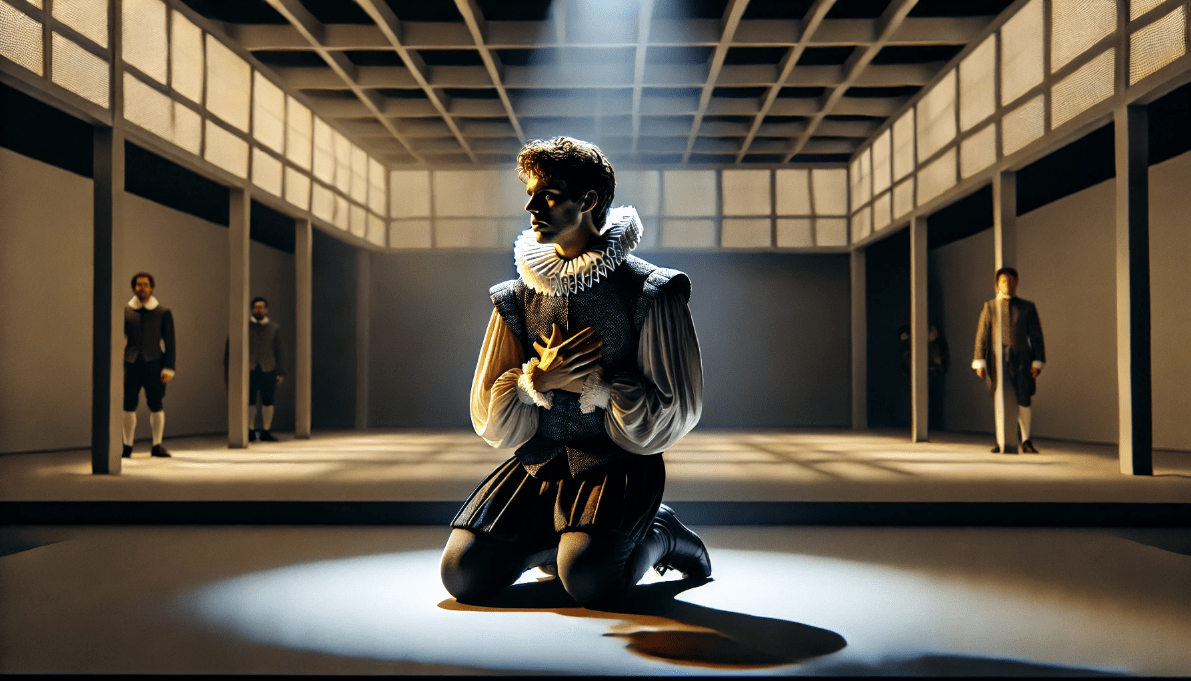
Understanding Shakespearean theatre conventions is one thing, but applying them to modern productions is where the magic happens. Whether you’re an actor or a director, incorporating these conventions effectively can transform your Shakespearean performance. Let’s explore how to apply these techniques in a contemporary setting while maintaining their timeless impact.
1. Balancing Tradition with Innovation
One of the key challenges in modern productions is staying true to the original conventions while still appealing to a modern audience.
- Tip for Directors: Stick to the core conventions—like verse and soliloquies—but feel free to experiment with modern elements, such as contemporary costumes or lighting. The goal is to respect the text’s integrity while bringing a fresh perspective.
- Tip for Actors: Focus on the emotional truths of the character. You don’t need to mimic Shakespeare’s era exactly—use the verse to express universal emotions that still resonate with today’s audience.
2. Embrace the Power of Verse and Prose
Verse is a signature element of Shakespearean theatre, but it doesn’t have to feel rigid or outdated in modern performances.
- Tip for Actors: Practice speaking in iambic pentameter to make it feel natural, not forced. Focus on the emotional intent behind each line. If you’re delivering a serious speech, let the verse carry the weight of your emotion, and if you’re speaking prose, allow it to flow with ease.
- Tip for Directors: Encourage actors to play with pace. A slow delivery of verse can build suspense, while quick-paced prose can heighten comedic moments. Allow room for fluidity and creativity, particularly in comedy.
3. Modernizing Soliloquies and Monologues
The soliloquy is one of the most powerful conventions in Shakespearean theatre, and it still holds immense dramatic weight today. But it’s up to you to make sure it doesn’t feel stale.
- Tip for Actors: Soliloquies are an opportunity for self-reflection. Think about how the character’s inner turmoil might be expressed in a modern context. For example, Hamlet’s “To be or not to be” could easily resonate with today’s audiences grappling with existential questions.
- Tip for Directors: Let the actor’s physicality be part of the soliloquy. Whether they’re pacing the stage or sitting in solitude, how they physically engage with the space adds emotional depth.
4. Use Asides to Build Connection with the Audience
Breaking the fourth wall by using asides can create a powerful moment of connection between the actor and the audience. In modern productions, this can still be a tool to make Shakespeare feel immediate and personal.
- Tip for Actors: When delivering an aside, make sure it feels like you’re confiding in the audience. It’s an intimate moment, so treat it with the same level of emotional honesty as the rest of the scene.
- Tip for Directors: In contemporary settings, asides can be enhanced by body language. Encourage actors to use eye contact or facial expressions to strengthen the bond with the audience.
5. Minimalist Staging Meets Modern Design
While minimalist staging was a hallmark of Shakespearean productions, modern directors can still honor this convention while updating it for today’s stage.
- Tip for Directors: Consider using modern, minimalist set designs that allow the actors and language to take center stage. You can achieve this by focusing on a few key props or abstract elements that symbolize the themes of the play.
- Tip for Actors: In a minimalist setting, your performance becomes even more important. Without excessive props or scenery, the focus will be on your delivery and connection with the audience, so embrace the simplicity and let your performance shine.
6. Cross-Gender Casting for Fresh Perspectives
Cross-gender casting remains a powerful tool in modern productions, allowing for fresh interpretations and deeper exploration of gender dynamics in Shakespeare’s plays.
- Tip for Directors: When casting roles traditionally played by one gender with an actor of the opposite gender, think about how it changes the character’s motivations or relationships. This can add new layers to the story.
- Tip for Actors: Embrace the challenge. If you’re playing a role of the opposite gender, focus on the universal qualities of the character—love, ambition, jealousy—and how those traits transcend gender.
7. Amplify Sound and Music to Enhance Mood
While Shakespeare’s productions often used music to set the tone, modern technology allows us to create even more immersive soundscapes.
- Tip for Directors: Use sound and music strategically to enhance pivotal moments in the play. A well-timed soundtrack or sound effect can deepen the emotional impact of a scene.
- Tip for Actors: Pay attention to the rhythm of the scene and how it aligns with the music. This will help you sync your performance to the emotional beats of the play, creating a more cohesive experience.
4: Shakespearean Theatre in the Modern Age
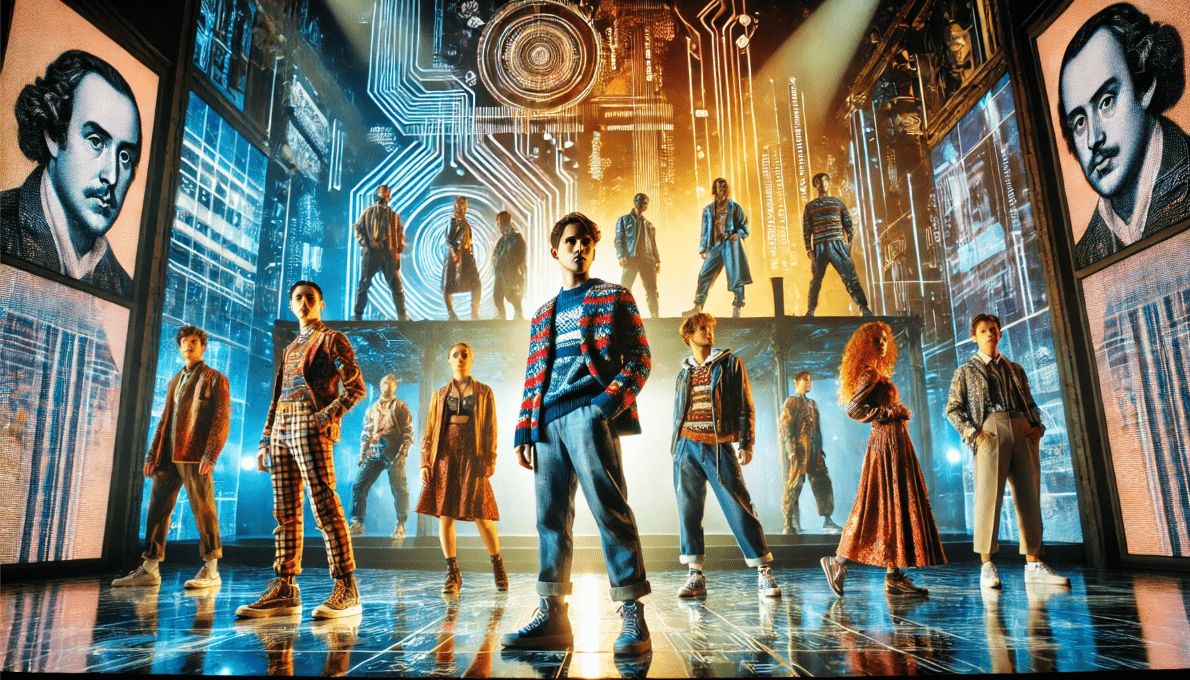
Shakespeare’s plays have stood the test of time, and today, his theatre conventions continue to resonate with modern audiences. But how do these conventions fit into contemporary productions? How can we keep his works relevant while maintaining the essence of his style? Let’s explore how Shakespearean theatre has evolved in the modern age.
1. Contemporary Adaptations: Bringing Shakespeare to Life
Modern productions of Shakespeare’s plays often incorporate innovative elements to connect with today’s audiences. Directors and actors find creative ways to update settings, costumes, and even language, while still honoring the core conventions.
- Example: The 1996 film Romeo + Juliet by Baz Luhrmann set in modern-day Verona, with all of the original Shakespearean dialogue, uses flashy visuals and music to engage today’s viewers without altering the text.
- Tip for Directors: Don’t be afraid to reimagine settings and costumes—whether it’s a futuristic take on Macbeth or a modern dress version of Hamlet. Keep the essence of the language and emotional depth intact, but feel free to explore fresh, relevant contexts.
2. Shakespeare’s Universality
One reason Shakespeare’s works have endured is their universal themes—love, jealousy, ambition, betrayal, and power—issues that are as relevant today as they were in the Elizabethan era. These themes allow modern productions to adapt the plays in ways that speak to current social, political, and cultural contexts.
- Example: The Taming of the Shrew can be interpreted today as a commentary on gender roles, power dynamics, and relationships, offering modern audiences a deeper connection to the text.
- Tip for Actors: When preparing for a role, think about how your character’s emotions and actions still apply in today’s world. Use your performance to highlight the relevance of these timeless struggles.
3. Shakespeare in the Digital Age
In the digital age, the impact of technology on theatre is undeniable. Many modern Shakespearean productions use multimedia elements, such as projections, digital effects, and virtual environments, to enhance the experience while staying true to the original conventions.
- Example: A production of The Tempest may use visual effects to represent the magic of the island, adding a dynamic layer to the fantastical elements of the play.
- Tip for Directors: When integrating digital effects or multimedia, ensure that they enhance the storytelling rather than distract from the actors and the language. Technology should support the text, not overshadow it.
4. Global Interpretations of Shakespeare
Shakespeare’s works are not limited to English-speaking countries; they have been adapted and interpreted around the world. From traditional performances to avant-garde productions, Shakespeare’s influence stretches across cultures, making his works more accessible to diverse audiences.
- Example: In India, a production of Macbeth might be set against the backdrop of political corruption and violence, reflecting local societal issues.
- Tip for Directors: When producing Shakespeare in a non-Western context, adapt the conventions while maintaining the core emotional truth of the play. It’s important to honor the spirit of the work while making it resonate with different cultural backgrounds.
5. Embracing Diversity and Inclusion
Shakespearean theatre today is increasingly inclusive. Diverse casting and gender-blind productions are pushing boundaries, allowing actors of all backgrounds and identities to take on roles that were once traditionally limited by gender, race, or class.
- Example: In 2019, a production of Hamlet had a woman, Ruth Negga, playing the title role, bringing a fresh perspective to the character and challenging traditional norms.
- Tip for Actors and Directors: Embrace diverse interpretations of characters. Shakespeare’s works are open to countless readings, and a diverse cast can enrich the experience, offering new insights into the text.
5: Common Challenges and How to Overcome Them
Even though Shakespearean theatre conventions provide a rich foundation for actors and directors, they can also present some challenges. Whether you’re struggling with the language or navigating complex staging techniques, it’s normal to face obstacles. Let’s tackle the most common issues and how to overcome them, so you can master the conventions with confidence.
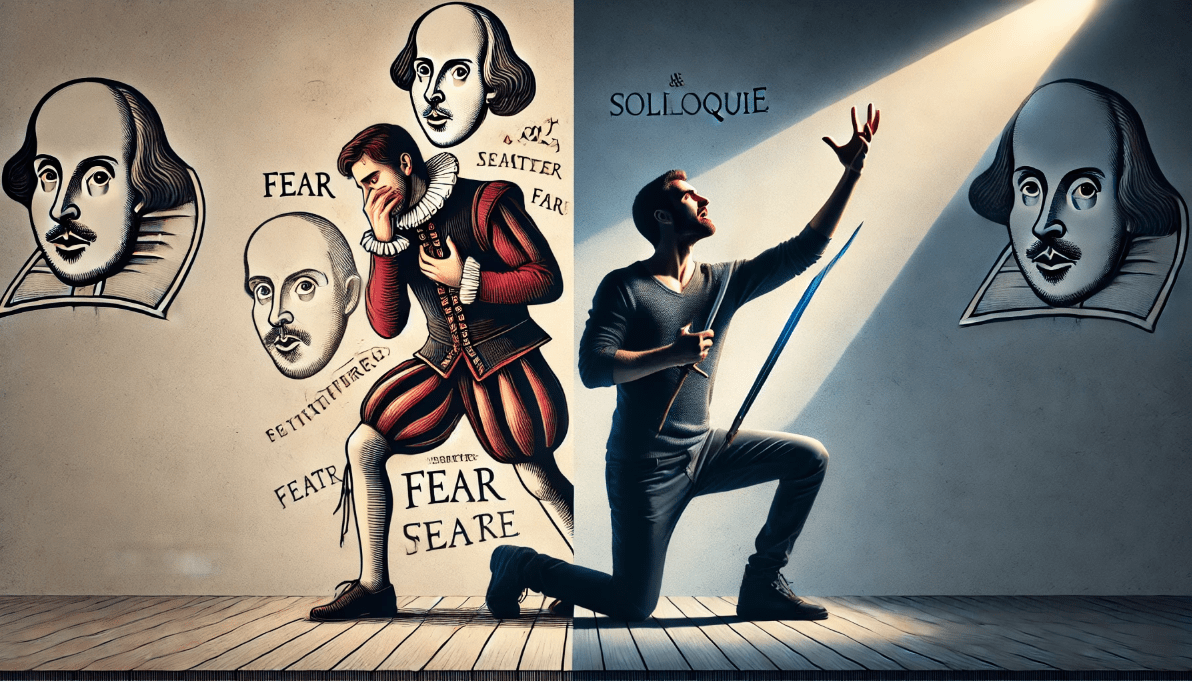
1. Difficulty with Shakespearean Language
Shakespeare’s language, while poetic, can be tricky to understand and deliver, especially if you’re new to his plays. The rhythm, archaic words, and sentence structure might feel overwhelming.
- Solution for Actors: Break down the text. Start by understanding the meaning of each line, then focus on the rhythm of the verse. Read aloud and practice with pauses and emphasis. Don’t be afraid to ask for clarification or consult modern translations if needed. Familiarity with the language comes with practice.
- Tip: Embrace the rhythm of iambic pentameter—it will help you find the natural flow of the verse, making it easier to deliver lines convincingly.
2. Mastering the Use of Verse and Prose
Switching between verse and prose can be challenging for actors, as it requires a shift in tone, pacing, and style. The verse often demands heightened emotion, while prose may call for more natural, conversational delivery.
- Solution for Actors: Be mindful of the context. When delivering verse, concentrate on the weight of each word. With prose, focus on natural speech patterns and timing. Practice switching between both styles until it feels like second nature.
- Tip: Mark your script where the verse shifts to prose and vice versa. This helps you visualize the tone and emotional shift in each scene.
3. Overcoming Fear of Soliloquies
Soliloquies are often intimidating due to their length and depth. Actors may fear coming across as overly dramatic or disconnected from the audience.
- Solution for Actors: Break the soliloquy into smaller chunks. Understand each emotional shift within the speech and treat it like a conversation with the audience. Remember, soliloquies are often a character’s most vulnerable moments—allow yourself to feel the emotion behind the words.
- Tip: Use physicality to connect with the soliloquy. Move around the space, sit, or pace to make it feel more grounded and dynamic.
4. Staging in Minimalist Settings
Shakespearean theatre often relied on minimalist staging, which can feel limiting for modern productions used to elaborate sets and props. The challenge is creating a powerful performance without an over-reliance on scenery.
- Solution for Directors: Focus on the actors’ performances and the emotional depth of the scenes. Minimal props or abstract stage elements can symbolize important themes. Emphasize storytelling through movement and dialogue rather than relying on a visually complex set.
- Tip: Use lighting creatively to set the mood and transition between scenes. This can help create a sense of place without overwhelming the stage.
5. Engaging Modern Audiences
Shakespeare’s works were written for a different time, and some modern audiences may struggle to engage with the language and structure. The challenge is making Shakespeare feel relevant and accessible to today’s viewers.
- Solution for Directors: Focus on universal themes like love, betrayal, and power. Modernize the production with contemporary touches—such as updated costumes or setting—but keep the language intact. Also, encourage actors to deliver the lines with clarity and emotional depth, ensuring they resonate with modern audiences.
- Tip: Use contemporary references in your direction, but don’t sacrifice the original language. Shakespeare’s words still hold universal truths, so let them shine through.
6. Navigating Cross-Gender Casting
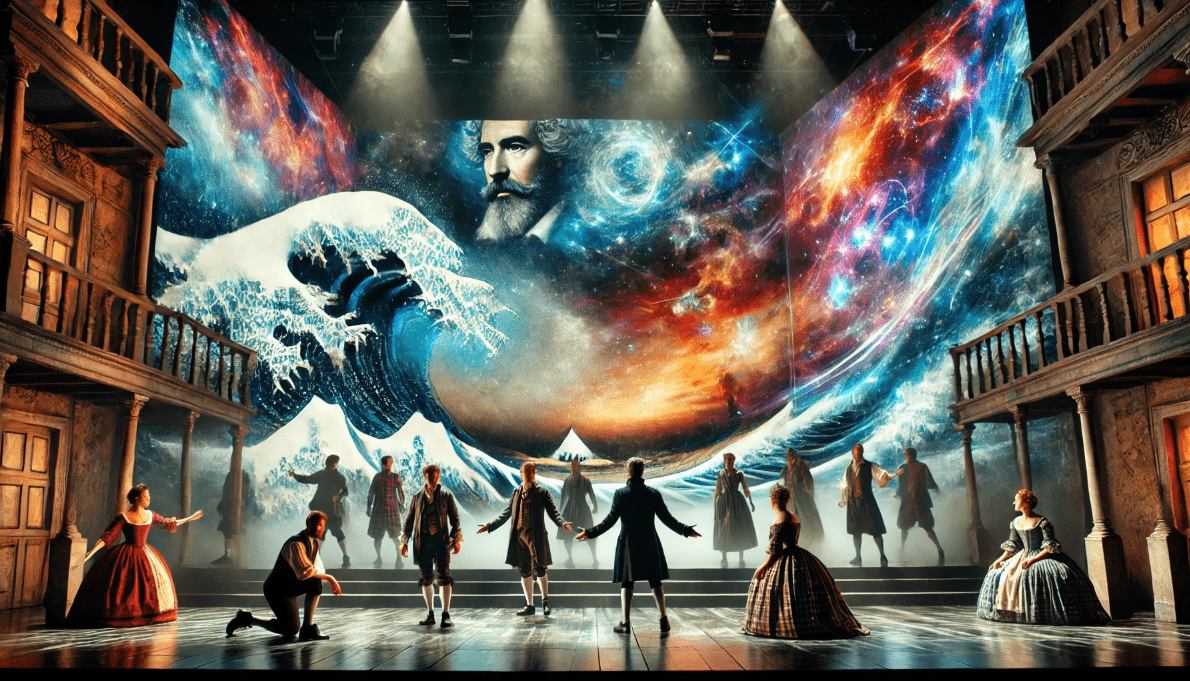
While cross-gender casting can be a great way to explore new interpretations of characters, it can also present challenges in terms of audience expectations and actor preparation.
- Solution for Directors: Ensure that the casting choice enhances the character’s arc and brings new layers to the performance. When directing a cross-gender role, consider how gender dynamics influence the character’s relationships and motivations.
- Tip: For actors playing cross-gender roles, embrace the challenge! Focus on universal human traits like ambition, love, and conflict—these transcend gender and will help you connect with the character in a meaningful way.
Mastering Shakespearean theatre conventions is a rewarding challenge that allows both actors and directors to connect with the timeless magic of the Bard’s works. By understanding and applying key techniques—such as the rhythm of verse and prose, the emotional depth of soliloquies, and the minimalist stage design—you can bring Shakespeare’s world to life in fresh, engaging ways that resonate with modern audiences.
While embracing these conventions may feel intimidating at first, remember that they are designed to highlight the power of language and human emotion. They create a rich foundation that allows for creativity, innovation, and meaningful performances. Whether you’re working with a traditional production or adding your own unique twist, these conventions will give you the tools to deliver truly impactful theatre.
So, take what you’ve learned and dive into your next Shakespearean project with confidence. With practice, patience, and a deep understanding of these conventions, you’ll be able to craft performances that honor the past while speaking to the present. 🎭✨
Frequently Asked Questions (FAQs)
1. What are Shakespearean theatre conventions?
Shakespearean theatre conventions are the techniques and traditions used in the staging, language, and performance of Shakespeare’s plays. These include the use of verse and prose, soliloquies, asides, minimalist staging, and often cross-gender casting. These conventions help create the distinct style and atmosphere that define Shakespeare’s works.
2. How do I master Shakespeare's verse and prose?
To master Shakespeare’s verse, focus on the rhythm of iambic pentameter and practice reading aloud. Understanding the meaning of each line helps you deliver the emotion naturally. For prose, treat it like everyday speech and focus on timing, humor, or casual tone. Practice switching between verse and prose to master the shift in tone and pacing.
3. What is the importance of soliloquies in Shakespearean theatre?
Soliloquies are crucial for revealing a character’s inner thoughts and emotions directly to the audience. These long speeches allow actors to connect deeply with the audience and provide insight into the character’s motivations. To perform them well, focus on the emotional journey and pace the delivery to allow the audience to feel the weight of the words.
4. How do I use minimalist staging in modern productions?
Minimalist staging focuses on simplicity, using few props and set pieces, allowing the actors and language to shine. In modern productions, this can be achieved by using symbolic set elements and creative lighting. The goal is to keep the focus on the performance, not the visuals, while still creating an impactful atmosphere.
5. What role does cross-gender casting play in Shakespearean theatre?
Cross-gender casting involves actors playing roles traditionally associated with the opposite gender. This convention adds new layers to the performance and offers fresh interpretations of characters. It can challenge traditional gender roles and bring new insights to Shakespeare’s plays, making them more relevant to modern audiences.
6. How can I keep a modern audience engaged with Shakespeare’s language?
To engage modern audiences, focus on the emotional depth of Shakespeare’s words. Use natural delivery, ensure clarity in speech, and highlight the universal themes in his plays, like love, power, and betrayal. Modernize the production with updated costumes and settings, but keep the language intact to preserve its emotional power.
7. What are the most common challenges in performing Shakespeare?
Some common challenges include mastering the complex language, switching between verse and prose, and delivering long soliloquies without sounding too dramatic. Additionally, minimalist staging can be difficult for actors used to elaborate sets. Overcoming these challenges requires practice, patience, and a deep understanding of the text.
